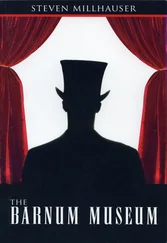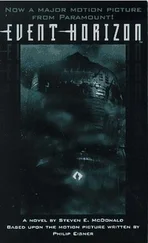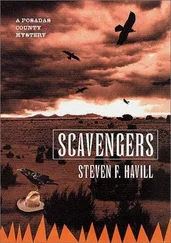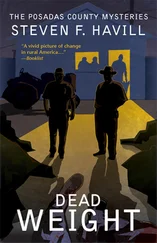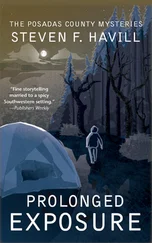Steven Levitt - Freakonomics
Здесь есть возможность читать онлайн «Steven Levitt - Freakonomics» весь текст электронной книги совершенно бесплатно (целиком полную версию без сокращений). В некоторых случаях можно слушать аудио, скачать через торрент в формате fb2 и присутствует краткое содержание. Год выпуска: 2005, ISBN: 2005, Издательство: HarperCollins Publishers Ltd., Жанр: Прочая научная литература, на английском языке. Описание произведения, (предисловие) а так же отзывы посетителей доступны на портале библиотеки ЛибКат.
- Название:Freakonomics
- Автор:
- Издательство:HarperCollins Publishers Ltd.
- Жанр:
- Год:2005
- ISBN:ISBN 0-06-083822-1
- Рейтинг книги:5 / 5. Голосов: 1
-
Избранное:Добавить в избранное
- Отзывы:
-
Ваша оценка:
- 100
- 1
- 2
- 3
- 4
- 5
Freakonomics: краткое содержание, описание и аннотация
Предлагаем к чтению аннотацию, описание, краткое содержание или предисловие (зависит от того, что написал сам автор книги «Freakonomics»). Если вы не нашли необходимую информацию о книге — напишите в комментариях, мы постараемся отыскать её.
Freakonomics — читать онлайн бесплатно полную книгу (весь текст) целиком
Ниже представлен текст книги, разбитый по страницам. Система сохранения места последней прочитанной страницы, позволяет с удобством читать онлайн бесплатно книгу «Freakonomics», без необходимости каждый раз заново искать на чём Вы остановились. Поставьте закладку, и сможете в любой момент перейти на страницу, на которой закончили чтение.
Интервал:
Закладка:
THE ABORTION-CRIME LINK: For an overview, see John J. Donohue III and Steven D. Levitt, “The Impact of Legalized Abortion on Crime,” Quarterly Journal of Economics 116, no. 2 (2001), pp. 379–420; and John J. Donohue III and Steven D. Levitt, “Further Evidence That Legalized Abortion Lowered Crime: A Response to Joyce,” Journal of Human Resources 39, no. 1 (2004), pp. 29–49. / 136 Abortion studies in Eastern Europe and Scandinavia: See P. K. Dagg, “The Psychological Sequelae of Therapeutic Abortion—Denied and Completed,” American Journal of Psychiatry 148, no. 5 (May 1991), pp. 578–85; and Henry David, Zdenek Dytrych, et al., Born Unwanted: Developmental Effects of Denied Abortion (New York: Springer, 1988). / 137 The Roe v. Wade opinion: Roe v. Wade, 410 U.S. 113 (1973). / 138 One study has shown that the typical child: See Jonathan Gruber, Philip P. Levine, and Douglas Staiger, “Abortion Legalization and Child Living Circumstances: Who Is the ‘Marginal Child?’” Quarterly Journal of Economics 114 (1999), pp. 263–91. / 138 Strongest predictors of a criminal future: See Rolf Loeber and Magda Stouthamer-Loeber, “Family Factors as Correlates and Predictors of Juvenile Conduct Problems and Delinquency,” Crime and Justice, vol. 7, ed. Michael Tonry and Norval Morris (Chicago:
University of Chicago Press, 1986); also, Robert Sampson and John Laub, Crime in the Making: Pathways and Turning Points Through Life (Cambridge, Mass.: Harvard University Press, 1993). / 139 So does having a teenage mother: See William S. Comanor and Llad Phillips, “The Impact of Income and Family Structure on Delinquency,” University of California–Santa Barbara working paper, 1999. / 139 Another study has shown that low maternal education: Pijkko Rasanen et al., “Maternal Smoking During Pregnancy and Risk of Criminal Behavior Among Adult Male Offspring in the Northern Finland 1966 Birth Cohort,” American Journal of Psychiatry 156 (1999), pp. 857–62. / 139 Infanticide fell dramatically: See Susan Sorenson, Douglas Wiebe, and Richard Berk, “Legalized Abortion and the Homicide of Young Children: An Empirical Investigation,” Analyses of Social Issues and Public Policy 2, no. 1 (2002), pp. 239–56. / 141 Studies of Australia and Canada: See Anindya Sen, “Does Increased Abortion Lead to Lower Crime? Evaluating the Relationship between Crime, Abortion, and Fertility,” unpublished manuscript; and Andrew Leigh and Justin Wolfers, “Abortion and Crime,” AQ: Journal of Contemporary Analysis 72, no. 4 (2000), pp. 28–30. / 141 Many of the aborted baby girls: See John J. Donohue III, Jeffrey Grogger, and Steven D. Levitt, “The Impact of Legalized Abortion on Teen Childbearing,” University of Chicago working paper, 2002. / 142 Abortion worse than slavery: See Michael S. Paulsen, “Accusing Justice: Some Variations on the Themes of Robert M. Cover’s Justice Accused,” Journal of Law and Religion 7, no. 33 (1989), pp. 33–97. / 142 Abortion as “the only effective crime-prevention device”: See Anthony V. Bouza, The Police Mystique: An Insider’s Look at Cops, Crime, and the Criminal Justice System (New York: Plenum, 1990). / 142 $9 million to save a spotted owl: See Gardner M. Brown and Jason F. Shogren, “Economics of the Endangered Species Act,” Journal of Economic Perspectives 12, no. 3 (1998), pp. 3–20. / 142 $31 to prevent another Exxon Valdez –type spill: See Glenn W. Harrison, “Assessing Damages for the Exxon Valdez Oil Spill,” University of Central Florida working paper, 2004. /
142–43 Body-part price list: Drawn from the state of Connecticut’s Workers’ Compensation Information Packet, p. 27, available as of this writing at wcc.state.ct.us/download/ acrobat/info-packet.pdf.
5. WHAT MAKES A PERFECT PARENT?
THE EVER CHANGING WISDOM OF PARENTING EXPERTS: Ann Hulbert, Raising America: Experts, Parents, and a Century of Advice About Children (New York: Knopf, 2003) is an extremely helpful compendium of parenting advice. / 148 Gary Ezzo’s “infant-management strategy” and sleep deprivation warning: See Gary Ezzo and Robert Bucknam, On Becoming Babywise (Sisters, Ore.: Multnomah, 1995), pp. 32 and 53. / 148 T. Berry Brazelton and the “interactive” child: T. Berry Brazelton, Infants and Mothers: Difference in Development, rev. ed. (New York: Delta/Seymour Lawrence, 1983), p. xxiii. / 148 L. Emmett Holt’s warning against “undue stimulation”: L. Emmett Holt, The Happy Baby (New York: Dodd, Mead, 1924), p. 7. / 148 Crying as “the baby’s exercise”: L. Emmett Holt, The Care and Feeding of Children: A Catechism for the Use of Mothers and Children’s Nurses (New York: Appleton, 1894), p. 53.
A GUN OR A SWIMMING POOL? See Steven Levitt, “Pools More Dangerous than Guns,” Chicago Sun-Times, July 28, 2001.
PETER SANDMAN ON MAD-COW DISEASE AND OTHER RISKS: See Amanda Hesser, “Squeaky Clean? Not Even Close,” New York Times, January 28, 2004; and “The Peter Sandman Risk Communication Web Site” at http:// www.psandman.com/index.htm.
HOW MUCH DO PARENTS REALLY MATTER? See Judith Rich Harris, The Nurture Assumption: Why Children Turn Out the Way They Do (New York: Free Press, 1998); for a Harris profile that also provides an excellent review of the nature-nurture debate, see Malcolm Gladwell, “Do Parents Matter?” The New Yorker, August 17, 1998; and Carol Tavris, “Peer Pressure,” New York Times Book Review, September 13, 1998. / 155 “‘Here we go again’”: See Tavris, New York Times. / 155 Pinker called Harris’s views “mind-boggling”: Steven Pinker, “Sibling Rivalry: Why the Nature/Nurture Debate Won’t Go Away,” Boston Globe, October 13, 2002, adapted from Steven Pinker, The Blank Slate: The Modern Denial of Human Nature (New York: Viking, 2002).
SCHOOL CHOICE IN CHICAGO: This material is drawn from Julie Berry Cullen, Brian Jacob, and Steven D. Levitt, “The Impact of School Choice on Student Outcomes: An Analysis of the Chicago Public Schools,” Journal of Public Economics, forthcoming; and Julie Berry Cullen, Brian Jacob, and Steven D. Levitt, “The Effect of School Choice on Student Outcomes: Evidence from Randomized Lotteries,” National Bureau of Economic Research working paper, 2003.
STUDENTS WHO ARRIVE AT HIGH SCHOOL NOT PREPARED TO DO HIGH SCHOOL WORK: See Tamar Lewin, “More Students Passing Regents, but Achievement Gap Persists,” New York Times, March 18, 2004.
THE BLACK-WHITE INCOME GAP TRACED TO EIGHTH-GRADE TEST SCORE GAP: See Derek Neal and William R. Johnson, “The Role of Pre-Market Factors in Black-White Wage Differences,” Journal of Political Economy 104 (1996), pp. 869–95; and June O’Neill, “The Role of Human Capital in Earnings Differences Between Black and White Men,” Journal of Economic Perspectives 4, no. 4 (1990), pp. 25–46. / 160 “Reducing the black-white test score gap”: See Christopher Jencks and Meredith Phillips, “America’s Next Achievement Test: Closing the Black-White Test Score Gap,” American Prospect 40 (September– October 1998), pp. 44–53.
160 “ACTING WHITE”: See David Austen-Smith and Roland G. Fryer Jr., “The Economics of ‘Acting White,’” National Bureau of Economic Research working paper, 2003. / 160 Kareem Abdul-Jabbar: Kareem Abdul-Jabbar and Peter Knobler, Giant Steps (New York: Bantam, 1983), p. 16.
THE BLACK-WHITE TEST SCORE GAP AND THE ECLS: This material was drawn from Roland G. Fryer Jr. and Steven D. Levitt, “Understanding the Black-White Test Score Gap in the First Two Years of School,” The Review of Economics and Statistics 86, no. 2 (2004), pp. 447–464. While this paper contains little discussion of the correlation between test scores and home-based factors (television viewing, spanking, etc.), a regression of those data is included in the paper’s appendix. Regarding the ECLS study itself: as of this writing, an overview of the study was posted at nces.ed.gov/ecls/.
Читать дальшеИнтервал:
Закладка:
Похожие книги на «Freakonomics»
Представляем Вашему вниманию похожие книги на «Freakonomics» списком для выбора. Мы отобрали схожую по названию и смыслу литературу в надежде предоставить читателям больше вариантов отыскать новые, интересные, ещё непрочитанные произведения.
Обсуждение, отзывы о книге «Freakonomics» и просто собственные мнения читателей. Оставьте ваши комментарии, напишите, что Вы думаете о произведении, его смысле или главных героях. Укажите что конкретно понравилось, а что нет, и почему Вы так считаете.



